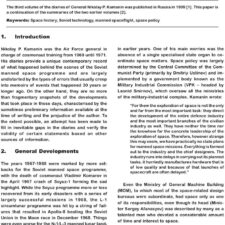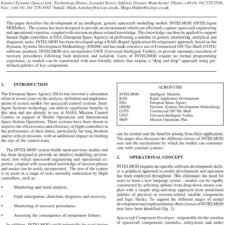Development of a Desktop Hybrid Motor for Classroom Demonstration
£5.00
J. S. Arkwright (2012), JBIS, 65, 47-60
Refcode: 2012.65.47
Keywords: Hybrid rocket motor, test facility, combustion, nitrous oxide, algorithm
Abstract:
This paper details the design of a static hybrid rocket motor, which can be safely fired within an outdoor classroom environment allowing close quarter observation of the combustion process. Combustion visibility is achieved by utilisation of a fuel grain manufactured from extruded acrylic (a transparent thermoplastic polymer) while nitrous oxide (N2O) has been selected as the oxidiser. The design is constrained in terms of both size and safety. Maximum fuel grain dimensions are restricted to [ OD L ] = [50 100] mm and a minimum Factor of Safety (FOS) of 5 is applied to all combustion chamber components. An FEA and transient thermal study of the major components of the test article has been conducted and the principal results presented herein. Substantiation for the results obtained during the FEA is presented via a combination of hand calculation and physical testing. The major hazards associated with the operation of the combustion chamber (test facility) are presented and the relevant risk mitigation, inherent in the design, is discussed. Concerns surrounding Explosive Decomposition (ED) of the oxidiser, due to a phenomenon known as adiabatic compression, are also addressed in detail. Furthermore, a detailed explanation of the preventative measures utilised in order to moderate the risk of ED is also presented. Finally, transient performance characteristics for the acrylic/N2O hybrid design have been obtained by adapting an algorithm suggested by Humble [1]. The data has been used to optimise the design, establish system trends and determine the theoretical performance of the facility.





